I have the following Oracle 10g table called _kv:
select * from _kv
ID K V
---- ----- -----
1 name Bob
1 age 30
1 gender male
2 name Susan
2 status married
I'd like to turn my keys into columns using plain SQL (not PL/SQL) so that the resulting table would look something like this:
ID NAME AGE GENDER STATUS
---- ----- ----- ------ --------
1 Bob 30 male
2 Susan married
- The query should have as many columns as unique
Ks exist in the table (there aren't that many) - There's no way to know what columns may exist before running the query.
- I'm trying to avoid running an initial query to programatically build the final query.
- The blank cells may be nulls or empty strings, doesn't really matter.
- I'm using Oracle 10g, but an 11g solution would also be ok.
There are a plenty of examples out there for when you know what your pivoted columns may be called, but I just can't find a generic pivoting solution for Oracle.
Thanks!

